A picturesque landscape is the one with lush green ground, snow clad mountains,blooming flowers and fresh water serene rivers. While all these are bestowed by nature, man’s contribution to the landscape is structures. From the Skyscrapers of New York adoring the Manhattan skyline to the Artificial Palm islands of Dubai, humans have equally contributed in beautifying the ambiance and landscape of places.
From Tokyo to Alaska, there are a host of structures and buildings we are worth viewing, working and living in. We have compiled a list of the top 20 most iconic buildings of the world for you.
Sydney Opera House
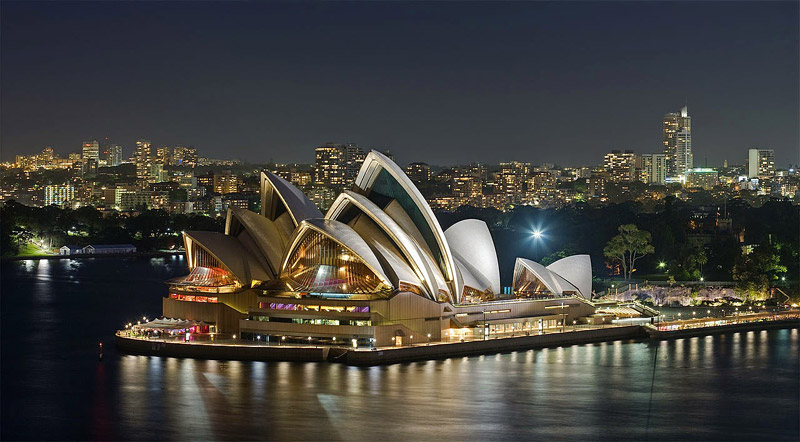
Declared as UNESCO World Heritage Site in 2007, Opera House is one of the most iconic buildings the world. Standing tall at 185 meters with a width of 120 meters, the building was designed by a Danish Architect Jorn Utzon. His design was selected as the winning design among 232 other entries in an international design competition,1957 bestowing him with a prize money of g 5000 pounds. Work started on it two years after his win with 10,000 builders employed.
Till the time it was finishes, the cost of the project reached 102 million Australian Dollars. The formal inauguration of the building took place on on 20 October 1973.
Paul Robeson was the first person to perform at the Sydney Opera House in 1960. The first opera performed at the house was Sergei Prokofiev’s War and Peace, on September 28 1973. Around thirty thousand events take place here every year visited by around eight million people.
Eiffel Tower

Eiffel Tower built in 1889 in Paris was the product of two engineers Maurice Koechlin and Émile Nouguier. It was designed as an entrance to 1889 World’s Fair. It is named after the engineer Gustave Eiffel, whose company designed and built the tower. He was also the engineer and architect behind the tower. This iron lattice tower is 324 meters tall and weighs 10,100 tonnes. It is the most visited monument of the world with over 7 million people visiting it every year. It took 2 years 2 months and 5 days to build the tower. Originally intended to stand for only 20 years since its construction, it soon became on of the most iconic monuments of the world.
Empire State Building

Standing tall at 1250 feet, Empire State Building is a 102 storey structure adorning the Manhattan skyline. The building was designed by William F. Lamb. It took one year and 45 days to complete the building. It was inaugurated by former Governor Smith’s grandchildren and the lights were turned on by the then President Herbert Hoover, who lit up the building from Washington DC.
The building has 85 stories of commercial space. The other 16 represent art deco tower. The building also has a 103rd floor accessible only by stairs from the 102nd floor. It requires special permission from the building management to visit this floor. The Empire State Building received a gold LEED rating in September 2011 and is the tallest Leadership in Energy and Environmental Design (LEED)-certified building in the United States.
Notre Dame de Paris
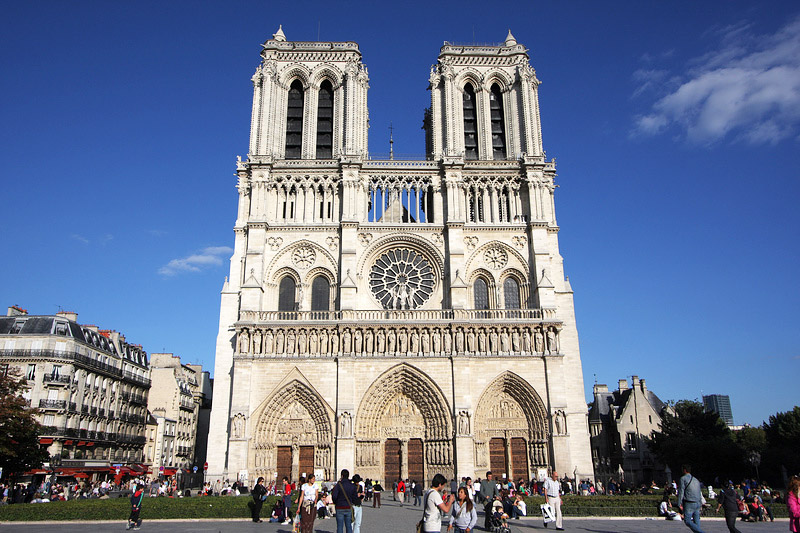
Notre Dame de Paris translates to “our lady of Paris”. Its is a Catholic cathedral which happens to be the official seat of the Archbishop of Paris. The magnificent monument is 130 meters long, 48 meters wide and 35 meters high. The construction of Notre Dame began in 1163 post which it endured destruction and subsequent restoration in many periods. It took its final shape of as we see today in 1345.
It is one of the most iconic structures in Paris and undoubtedly one of the most iconic buildings of the world. It is known for one of the world’s largest organs and its immense and splendid church bells. The Cathedral was one of the world’s first buildings to use flying buttress and was is considered to be one of the finest examples of French Gothic Construction.
Casa Mila

Casa Mila popularly known as La Pedrera was designed by architect Antoni Gaudí for a wealthy couple Roser Segimon and Pere Milà in Barcelona, Spain. It took six years to build the structure from 1906 to 1912. The building occupies a space of 1,323 meters square per floor. The building was criticized for its bold and modernistic design when it was made. The building resides many structural innovations which include self-supporting stone front and columns, and floors free of load bearing walls and underground garage.
The structure is made completely with natural stones and does not have any straight lines. The building is designed so that removal of any wall would not affect the stability of the building. Today, the building is the Fundació Catalunya-La Pedrera headquarters. It is also a cultural center for a number of different activities held by Fundació Catalunya-La Pedrera. It was declared a World Heritage Site by UNESCO in 1984.
Cathedral of Brasilia
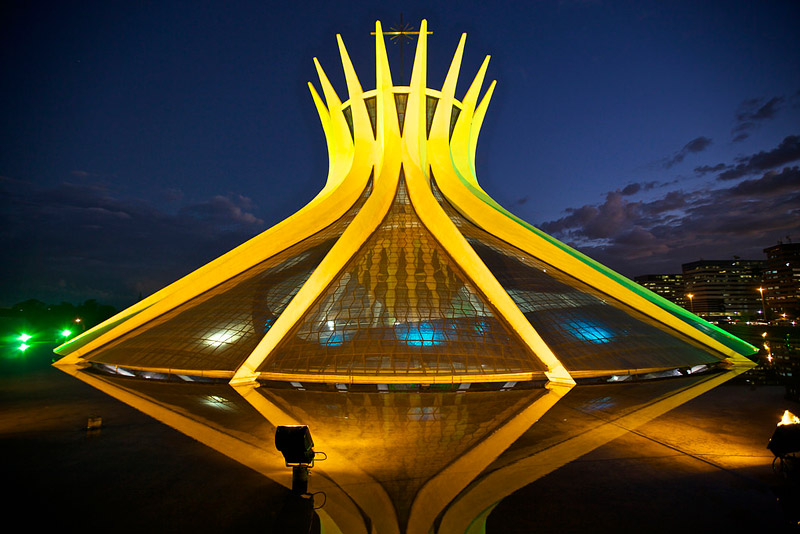
The Cathedral of Brasilia is a masterpiece of modern religious art in Brasília, Brazil. It is a is the Roman Catholic cathedral serving the the seat of the Archdiocese of Brasília.It was designed by Oscar Niemeyer. The construction started on September 15, 1958 and the structure was finished on April 21, 1960. After some hiccups and delays, the Cathedral was officially opened on May 31, 1970 by Cardinal D. Eugenio Salles.
It was declared a national historic and artistic monument on July 15, 1990. The cathedral has a striking hyperbolic structure constructed from 16 concrete columns, weighing 90 tons each. The entrance to the cathedral is through a dark tunnel after which it emerges into a bright space with a glass roof. With its breathtaking design, it is perhaps one of the most iconic buildings of the world.
The Shard
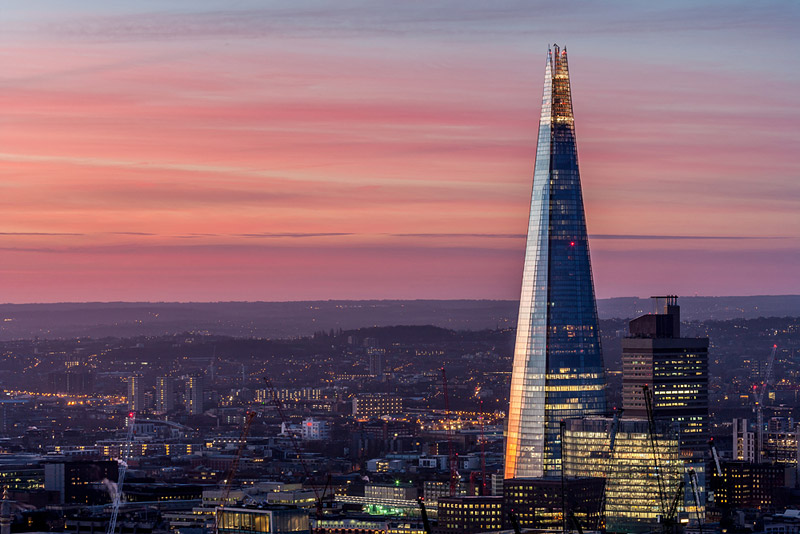
The Shard is a 309.6 metres high 95 storey skyscraper in London, United Kingdom. The construction of Shard began in 2009 and it was completed in 2012. The Shard was inaugurated by Hamad bin Jassim bin Jaber Al Thani, the Prime Minister of Qatar.
A project of State of Qatar and Sellar Property Group, Renzo Piano designed the Shard like a spire-like sculpture emerging from the River Thames.The building has 11,000 glass panels and 56,000 meters square of glass facade. It was designed using energy efficiency in mind and much of the construction material used was recyclable. The building lodges residents, hotels, offices and observation galleries.
Burj Khalifa
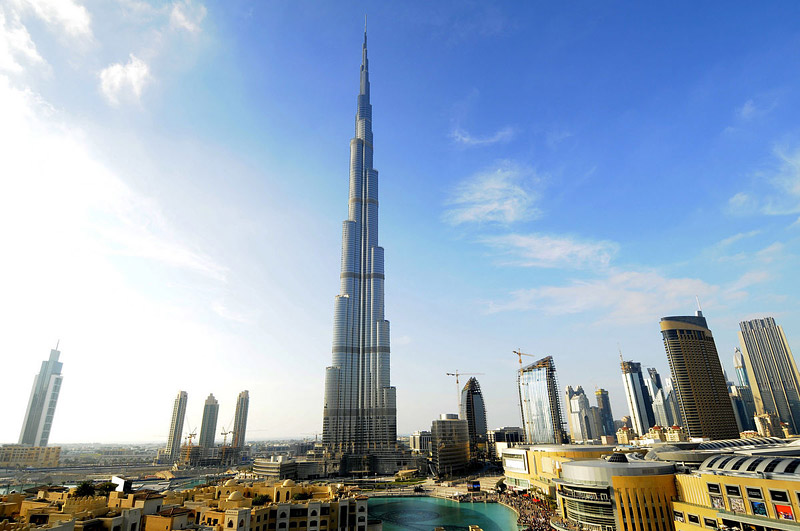
This 829.8 m skyscraper in Dubai is the tallest structure in the world and one of the most iconic buildings of the world. The building was designed by Adrian Smith and the construction began in 2004 and was completed in 2009. The design of the tower is inspired by the shape of Hymenocallis flower.
The building was officially inaugurated in 2010 as a part of Dubai Downtown project. There are hotels, residences and observational laboratories in the 163 floors of the building. Apart from being the tallest building in the world, it is also the tallest freestanding structure in the world, highest number of stories in the world, highest occupied floor in the world, highest outdoor observation deck in the world, elevator with longest travel distance in the world and and tallest service elevator in the world.
Taj Mahal
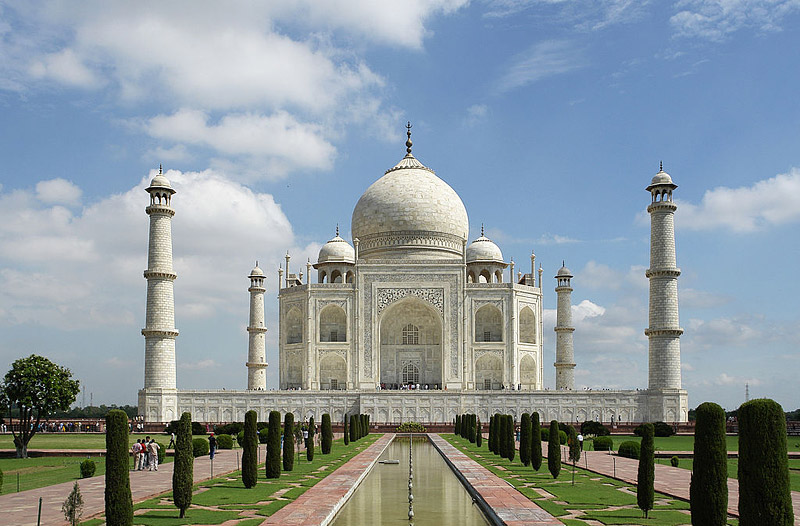
Taj Mahal is an architectural marvel made of white marble situated at the banks of river Yamuna in Agra, India. It was built by the Mughal Emperor Shah Jahan in memory of his beloved wife Mumtaz Mahal. Led by the architect, Ustad Ahmad Lahauri it took around 22,000 men and seventeen years to build the the Taj Mahal. Its is a masterpiece of Persian and Mughal architecture.
The changing colors of the Taj Mahal from a pinkish hue in the morning, milky white in the evening and golden at night when lit by the moon are said to resembles the changing mood of Shah Jahan’s queen. Around 8 million tourists visit The Taj Mahal every year. The Taj Mahal was designated as a UNESCO World Heritage Site in 1983. Owing to its dazzling beauty, the Taj is one of the most iconic buildings of the world.
The Kaaba
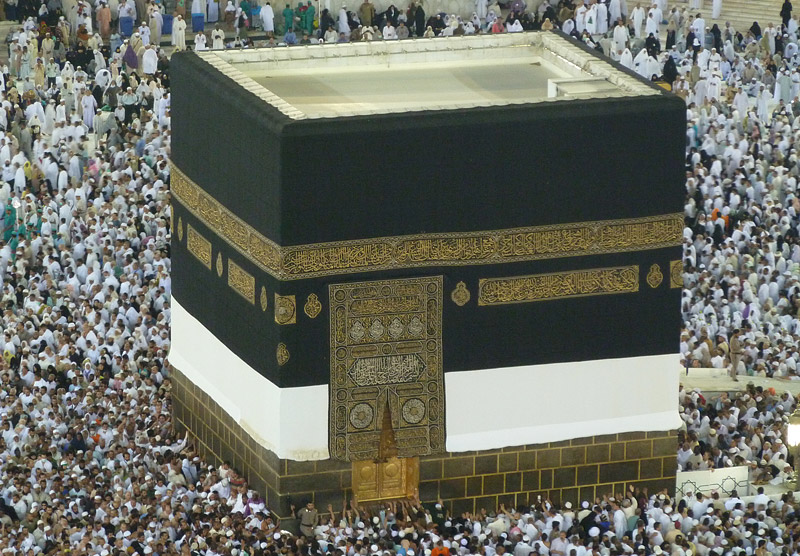
The kaaba is the most sacred Muslim pilgrimage site in the world. This brick cuboid structure is located at the center of Islam’s most sacred mosque, Al-Masjid al-Haram, in Mecca, Saudi Arabia. While performing their prayers, Muslims all over the world face in the direction of the Kaaba . Every Muslim visits the Kaaba at least once in their lifetime as a part of Hajj pilgrimage.
The glorious structure is a bricked cuboid made of granite. The Kaaba is approximately 13.1 m , with sides measuring 11.03 m by 12.86 m. Inside the Kaaba, the floor is made of marble and limestone. The Kaaba was initially open to all pilgrims but due to huge numbers of visitors the entry was restricted for the general crowd.The initial Kaaba had a door for entrance and another for way out with a window situated to 1 side. The present Kaaba merely has one door and no window.
Dome of the Rock
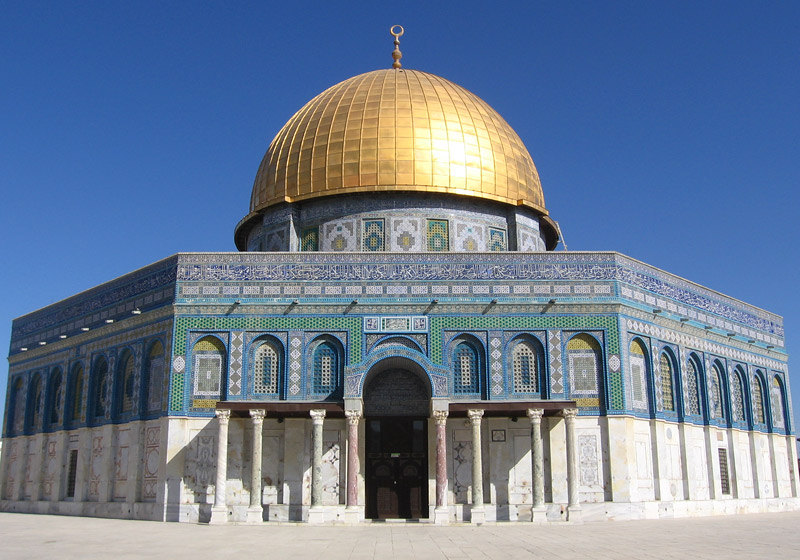
A masterpiece of Islamic architecture, the Dome of the Rock is a 7th century building, located in Jerusalem. Built by Caliph Abd al-Malik between 687 and 691, the octagonal plan and the rotunda dome of wood are of Byzantine design. The Persian tiles on the exterior and the marble slabs that decorate the interior were added by Suleiman I in 1561.
The oldest extant Islamic monument, the Dome of the Rock has served as a model for architecture and other artistic endeavors for over a millennium.
Petronas Towers
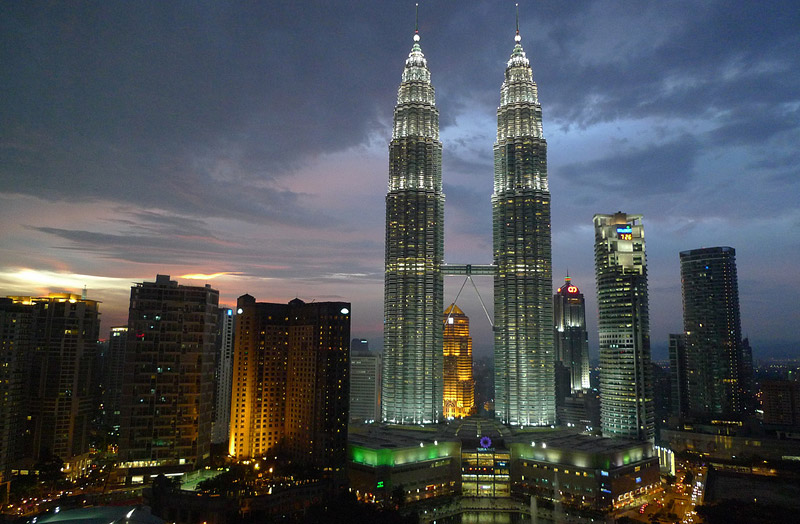
Standing at 170 metres above ground, the Petronas Towers are twin skyscrapers in Kuala Lumpur, Malaysia. The buildings, which held the titled of tallest in the world between 1998-2004, are an iconic landmark of the capital city.
The distinctive postmodern style was created by architects Cesar Pelli and Achmad Murdijat, engineer Deejay Cerico and designer Dominic Saibo under the consultancy of JC Guinto.
The White House

Irish architect James Hoban was the man behind the design of the White House. In 1792 Hoban submitted a plan for the presidential mansion and subsequently got the commission to build the White House. Constructed began in 1793 through to completion in 1801. The mansion, which has been home to every US leader since the country’s second president John Adams, is made from white-painted Aquia sandstone.
Leaning Tower of Pisa

The Leaning Tower of Pisa is one of the most remarkable architectural structures in Europe. Most famous for its tilt, the tower began to lean during construction after soft ground on one side was unable to properly support the structure’s weight.
Building work on the tower began in 1173 and went on for over a whopping 300 years. There has been much controversy surrounding the true identity of the architect behind the tower – the design originally attributed to artist Bonnano Pisano but studies have also implicated architect Diotisalvi.
St Basil’s Cathedral
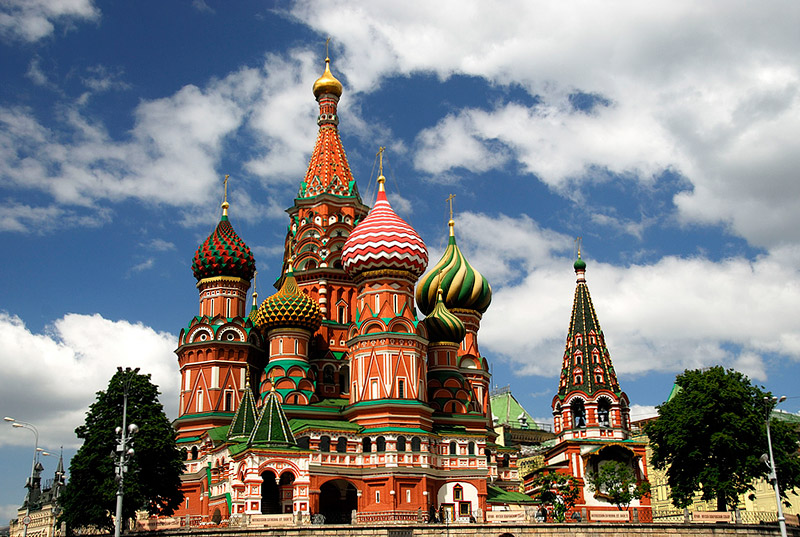
This garish, candy coloured cathedral is in fact Moscow’s most visited tourist attraction. The famous landmark, shaped to resemble the flame of a bonfire rising into the sky, is located just outside the Kremlin gates and marks the geometric centre of the city.
Built between 1554 and 1560, the cathedral was erected during the reign of Ivan IV (Ivan the Terrible). Little is known about the building’s architect Postnik Yakovlev, but he was clearly a fan of onion domes, sharp spikes and polygonal towers.
Colosseum

This elliptical amphitheatre in the centre of Rome is considered as one of the greatest architectural feats achieved by the Ancient Romans. The stadium was capable of seating 50,000 spectators and used mainly for gladiatorial games.
Built from concrete and stone, construction began on the Colosseum began around 72AD and finished in 80AD. The design and shape of the Colosseum has been the inspiration for many modern day stadiums. Today it is one of Rome’s most popular tourist attractions, attracting thousands of visitors each year.
Hagia Sophia
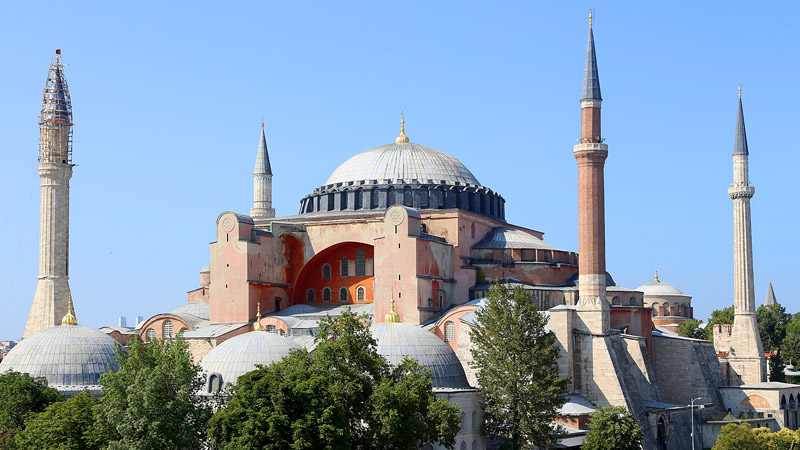
Once a church, later a mosque, and now a museum, Hagia Sophia is a architectural masterpiece. A perfect example of Byzantine architecture, Hagia Sophia is located in Instanbul, Turkey.
The building was built for the first time by the emperor Constantine the Great (306-337). However, due to many factors, including being burned down in riots and earthquakes, the ancient cathedral has been rebuilt many times since. Despite this, Hagia Sophia is widely recognised as one of the great buildings of the world. And if that wasn’t cool enough, the building also features in the opening scenes of the Bond film, Skyfall.
The Burj Al Arab
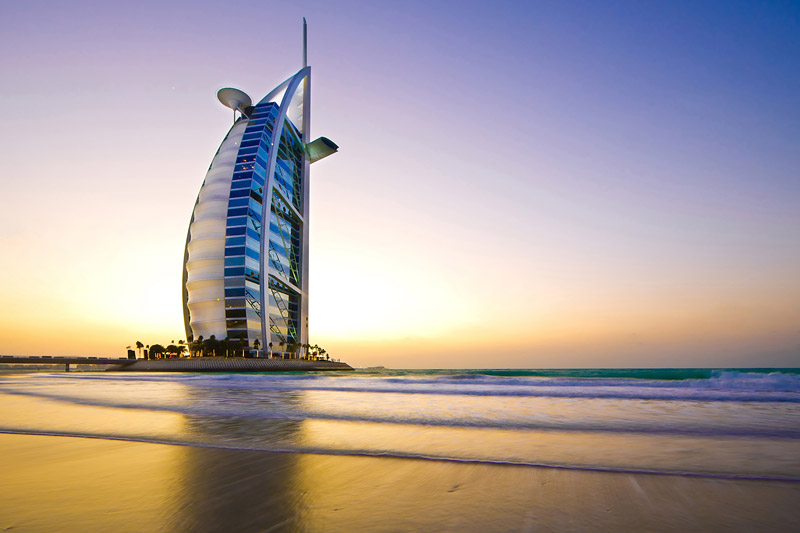
In a city famous for its architecture, the Burj Al Arab defines the Dubai skyline. The newest building on a long list of architecture built on a grand scale, the Burj Al Arab was built in 1994 and is one of the most luxurious hotels in the world. Perched on a man-made island in the Persian Gulf, it was built to mimic the sail of a dhow. The hotel features a 590-foot tall atrium, a large seawater aquarium, two restaurants (one of which was voted in the top 10 restaurants in the world by Conde Nast) and 202 luxuriously appointed suites. The Burj Al Arab was designed by Tom Wright and built by Atkins for Jumeirah Hotels and Resorts. It is currently the second largest hotel in the world.
Big Ben
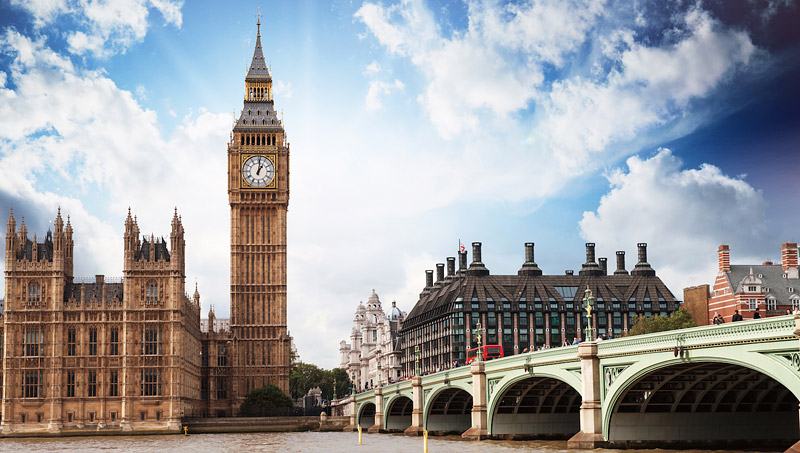
One of the world’s most famous clocks, Big Ben is actually the name of one of the bells but over the years it has come to be used for both the clock and the tower as well. It was completed during the restoration of the Palace of Westminster in 1858. The tower stands 316 feet tall, each clock face is 23 feet square with 4 foot numbers and the great bell is seven and a half feet tall and weighs 13 tons.
Nobody knows exactly whom Big Ben is named after but common theories include Sir Benjamin Hall (who oversaw the installation of the bell) or English Heavyweight Boxing Champion Benjamin Count. Charles Barry designed Westminster Palace, however, Augustus Pugin created the clock tower. Pugin fell into madness and died in 1852 and Big Ben was the last building he would ever design. The clock itself was designed by Beckett Denison.
The Giza Pyramids
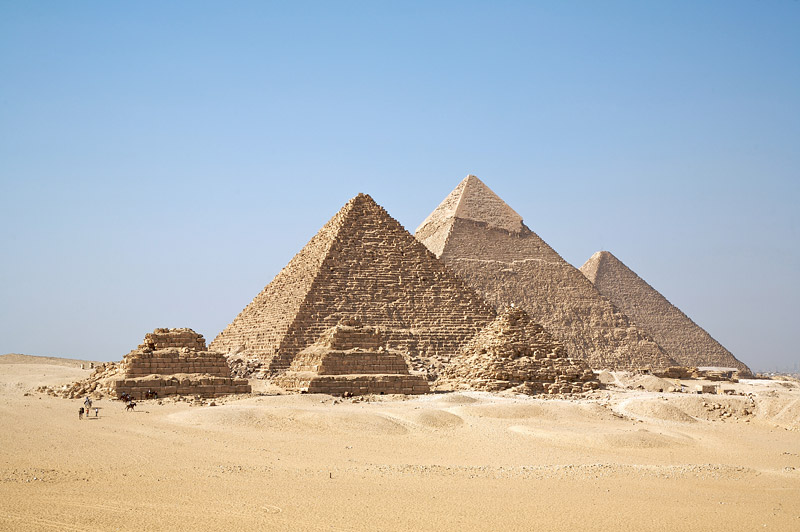
The oldest buildings on this list, the pyramids on the Giza plateau have intrigued mankind for centuries. Not only have they stood the test of time, but the accuracy with which they were built is impressive even by today’s standards. They were built as tombs for three separate pharaohs during the Third and Fourth Dynasty. It is also the only surviving wonder of the ancient world and was the tallest building in the world until 1300 when it was surpassed by the Lincoln Cathedral.
Despite their long history, or perhaps because of it, mysteries have swirled around the pyramids since they were found by the Ancient Greeks thousands of years ago. How were they built? How many people worked on the project? How long did the construction take? What was the Egyptians’ understanding of astronomy, mathematics, and geography? And even crazy questions like: did aliens help in their construction? While these questions go unanswered, all we are left to do is marvel at a culture who were master builders even before the invention of the wheel.
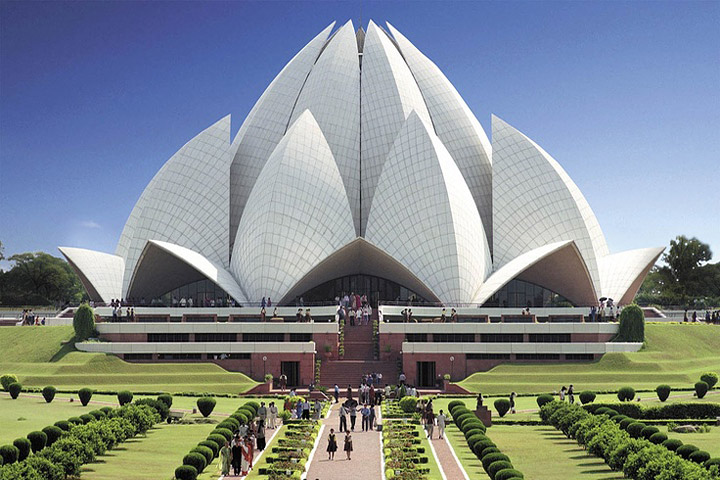

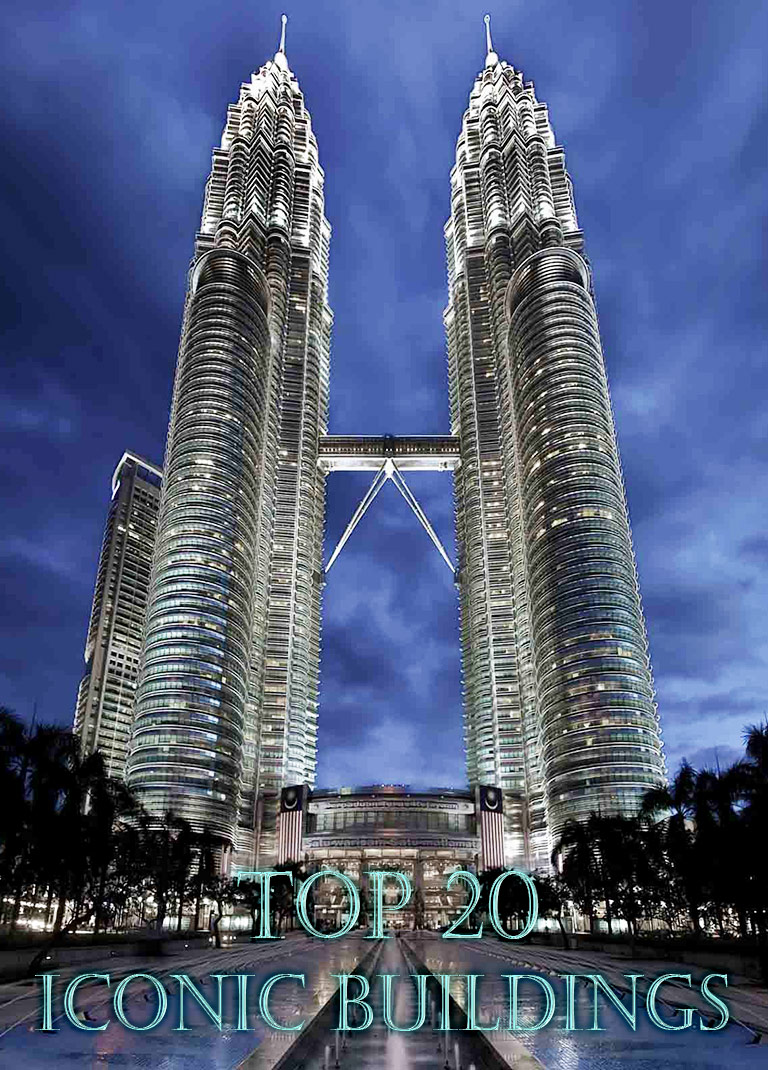



The Acropolis of Athens should have been included…